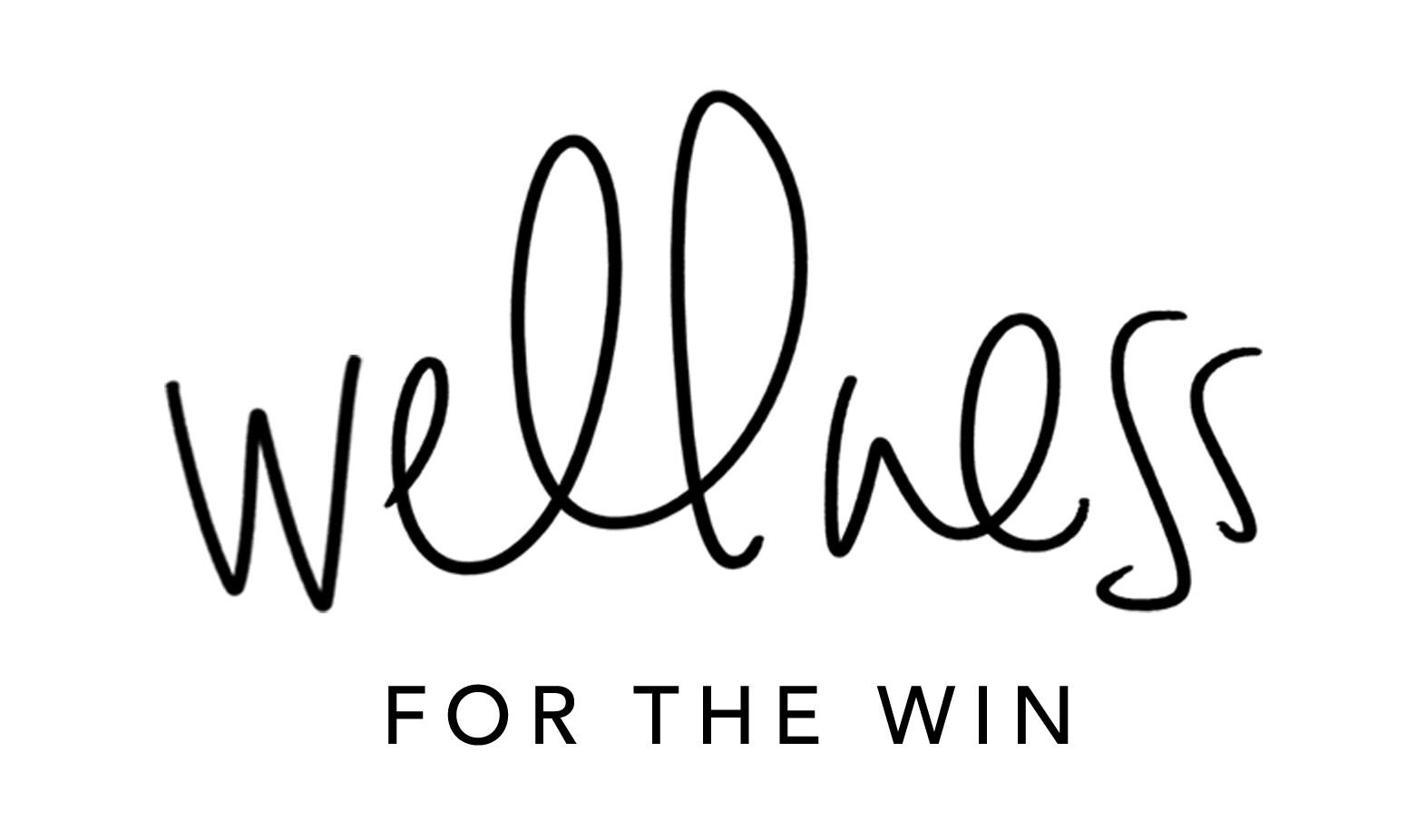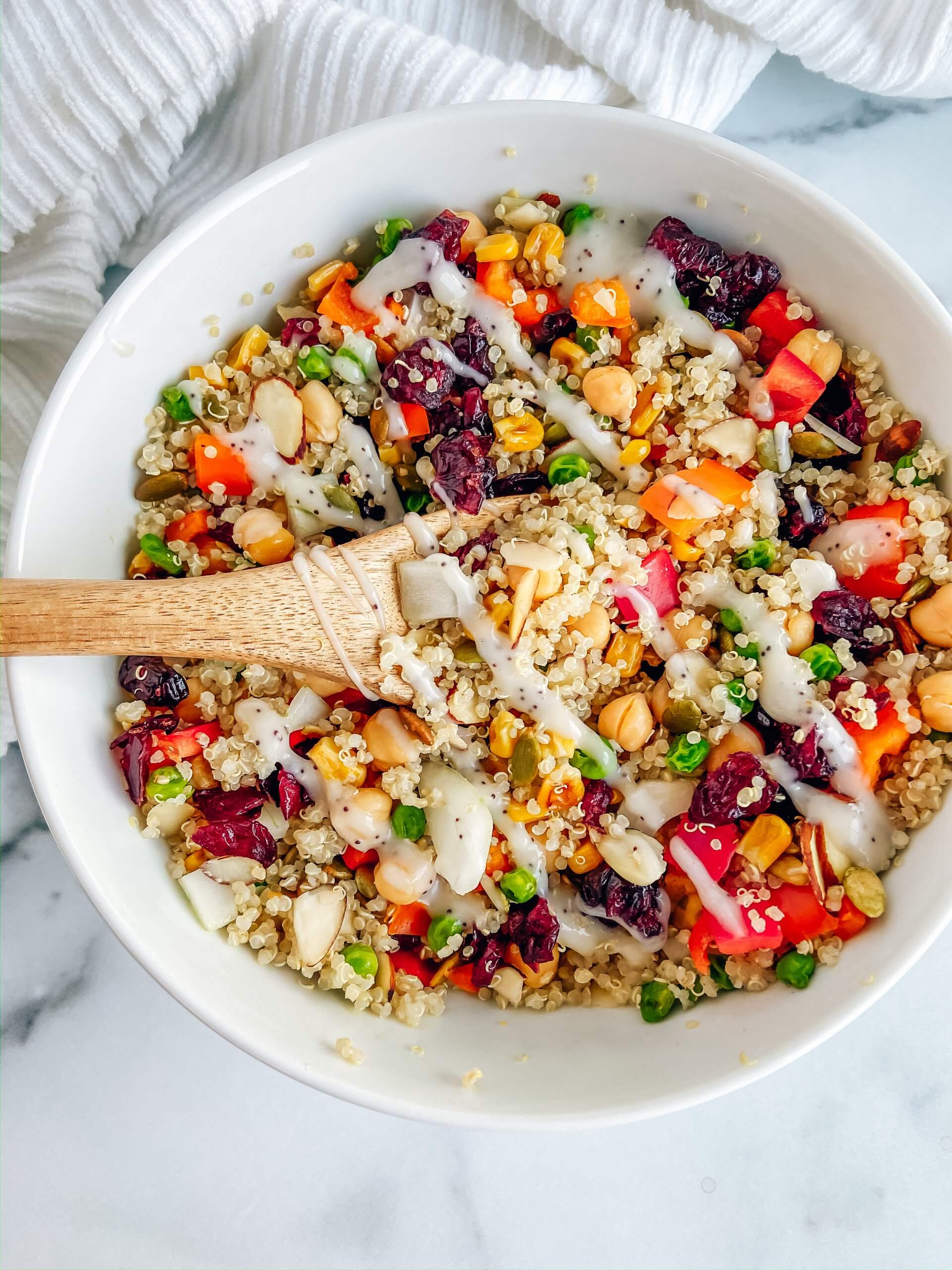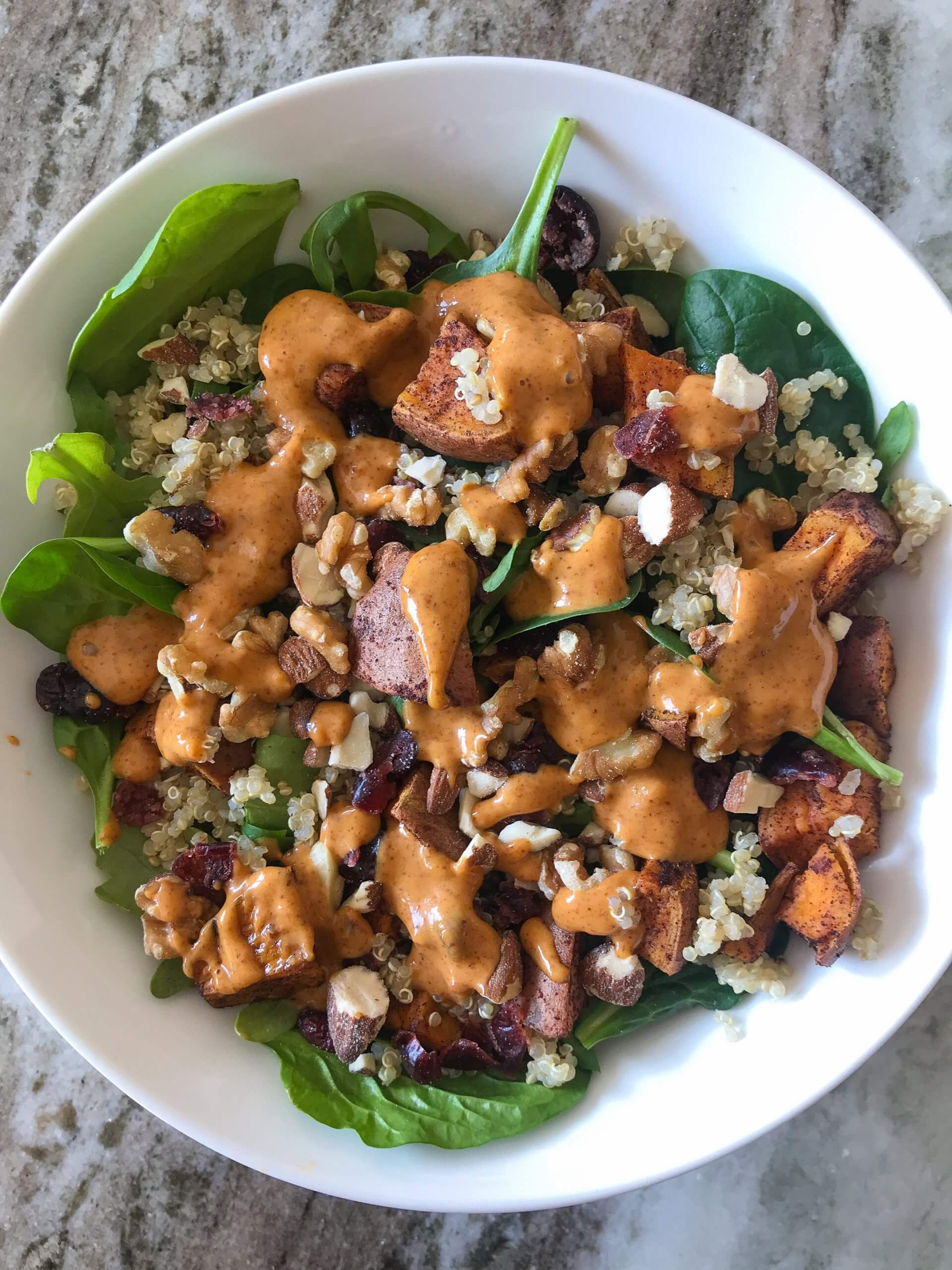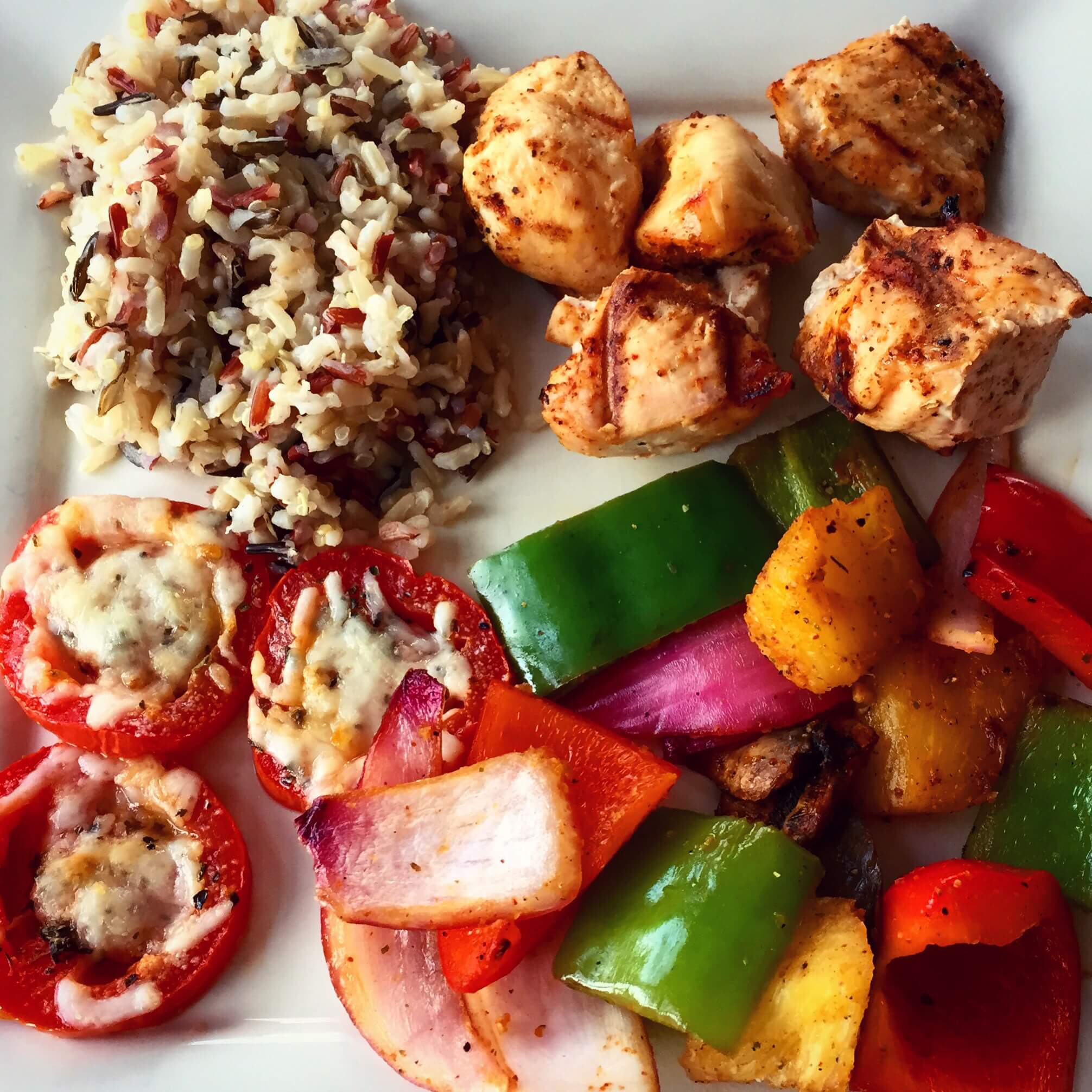Get Your Nutrition Facts Straight
Happy Monday everyone! It’s a brand new week – time to get stuff done! Don’t skip your workout today, and eat your fruits and veggies. ; ) If you were anything like me this weekend, you need to get back to business. I had a weekend full of festivities, so I indulged a little more than I like to. But hey, it happens! I went to a Bill Self 70s themed fundraiser party with my dad, and there was some crazy delicious food there. I had no choice but to eat a cake pop… or two. 😉
Anyway, today I’m going to talk to you about nutrition labels. I’ve had these thoughts brewing in my mind for a while, so if it’s a little scatterbrained I apologize. It’s a Monday – give me a break.
It’s important to know what you’re putting in your body, and reading the nutrition labels on your food is a great way to get informed. But simply glancing at the number of calories on the label may not be enough. You need to have some knowledge to be able to decipher what certain words and ingredients mean, too.
Are you guilty of mindlessly dumping stuff into your shopping cart at the grocery store without thinking twice about the nutritional value? How many of those products did you grab simply because the package looked good, so you figured the food inside must be too? Food companies have that whole marketing thing down by now. They use pretty, colorful packaging to grab your attention, and then they seal the deal by slapping buzzwords on the front such as, “made with real fruit”, “multigrain”, “reduced fat” or “light”. But what are they really telling us?
Here’s a perfect example: Pop-Tarts. I’m sure a lot of you love them, so I apologize in advance for talking smack on them. The front of the Pop-Tarts box has pictures of fresh fruit on it and even says, “Baked with real fruit” but when you take a peek at the ingredients, the only place that fruit shows up on the list is after the words “Contains less than 2% of”… and it’s dried fruit. So they basically just lied to your face. Some of the ingredients preceding “fruit” on the ingredient list include corn syrup, high fructose corn syrup, dextrose, palm and soybean oil, and sugar, to name a few. So maybe a Pop-Tart isn’t quite the breakfast of champions. Shocking, I know.
Let’s start by breaking down the ingredient list portion of the nutrition facts label. Ingredients are listed by weight in descending order, so the food contains the largest amount of the first ingredient listed. Minimize or avoid products with sugar (or the equivalent of sugar) in the first few ingredients. That means the food contains more sugar than EVERYTHING on the list below it. Yikes. The first item listed should always be what you expect. For example, the first ingredient in tomato sauce should be “tomatoes”, not sugar/salt, or any other mystery ingredients. The first few ingredients in Starbursts are sugar, corn syrup, and palm oil. This is going to look similar for most candy, pastries, and other junk food. But you might be surprised to find that sugar is pretty high up on the list in foods like cereal, granola bars, crackers and many other items found in your pantry that you may have thought were “healthy”.
Okay – now on to some tricky, deceiving words you may see on food labels.
Surprise! The word “multigrain” is NOT equal to whole grain: the word just means that the product is made up of “multiple grains” (appropriately named), so it might contain some whole grains, but it most likely contains refined grains as well. Glance at the ingredient list to double check – you want the first ingredient to contain the word “whole”. (e.g. whole wheat flour) Whole grain breads and other whole grain products should:
- Say somewhere on the package how many grams of whole grains it contains (16 g of whole grains per slice)
- And/or have a whole grain (such as whole wheat flour or 100% whole grain rolled oats) as the first ingredient
- And/or have the yellow “Whole Grain” stamp on the package stating that the product is in fact 100% whole grain.
Check out this picture of Sara Lee “Honey Wheat” bread – the first ingredient is Enriched Wheat Flour, with whole wheat flour way down on the list AFTER honey.
Side Note: a refined carbohydrate is a carbohydrate that has been processed to the point where most of its intact grain (AKA the healthy part) has been removed. Refined carbohydrates include white bread/rice/pasta, as well as some cereals, crackers, potato chips, baked goods and more. These foods lead to quick spikes in blood sugar levels because they digest quickly. Consuming refined carbs can increase your risk of becoming overweight/obese and developing chronic diseases.
Next up: natural. The FDA has not actually defined this term, but one would probably assume this means the food is in its “natural” form, or free of chemicals and other additives. Sadly, that is not the case. Because they haven’t clearly stated what exactly qualifies as “natural”, many packaged foods smack this word on the label and still contain many added ingredients, making it quite far from natural.

HFCS/Sugar: Just because a food is free of high fructose corn syrup, doesn’t mean it’s free of other similar ingredients, such as plain ol’ table sugar, brown rice syrup, agave, etc. Some other words that mean the same thing as sugar that you might see on the ingredients label are: glucose fructose, cane juice extract, maltose, dextrose, molasses, sucrose and corn syrup. Calorie containing sweeteners are also linked to obesity and other health issues, so try to minimize your consumption of them.

Any form of the word sodium is still salt. Sodium benzoate, monosodium glutamate (MSG), and disodium phosphate are just a few of the words you may see on your nutrition labels. The extra words and syllables don’t make it any better for you than regular salt, unfortunately. Check the Nutrition Facts label to find out how much sodium it really contains. Americans consume WAY more sodium than is recommended, and this is mainly due to overconsumption of highly processed foods, which have a lot of added sodium for preservative and flavoring purposes. Choose foods in their natural form whenever possible to reduce sodium in your diet. Quaker Maple & Brown Sugar oatmeal contains 290 mg of sodium PER tiny little packet, while the big carton of old-fashioned oats contains 0 mg of sodium per serving and the only item on the ingredient list is: “100% whole grain rolled oats”. Huge difference!
Portion. Control. The calorie and fat content of a food may look great on the label… until you look at the serving size. Sometimes they are just setting us up for failure; the serving size is so unrealistically small that you are more than likely going to consume 2-3 times that amount (and 3x the amount of calories, fat, sodium, etc.) Some individually packaged foods (like those found in vending machines) are especially tricky because they may contain multiple servings in what appears to be a single serving package. So, remember to pay attention to the serving size as well as the nutrition facts.
Things to avoid:
- Partially hydrogenated oils
- Trans fat – period.
- High fructose corn syrup/sugar/brown rice syrup
- Coconut oil: this is a saturated fat. I can’t remember if it was Dr. Oz that made everyone think coconut oil is healthy, but it’s not. Olive and canola oil are better choices because they contain unsaturated fats, which are associated with heart health, rather than heart disease.
- Enriched wheat flour, wheat flour, white flour, all-purpose flour, unbleached/bleached flour, cake flour, and bread flour. These options are lacking the vitamins and minerals found in whole-wheat flour, so stick with WHOLE wheat to get the most health benefits.
As I’m sure you’ve gathered by now, unprocessed food is the way to go. It’s real and fresh and doesn’t need attractive labels or catchy phrases; we want to eat it anyway because it’s good for us! It doesn’t have any crazy added ingredients that you can’t pronounce. Cauliflower is made of… cauliflower. Chicken is chicken. Sweet potatoes, peppers, broccoli, bananas, eggs, oats… you know the rest. In a perfect world, we would all eat fruits and vegetables and meat and nuts and whole grains and [low fat 😉 ] dairy and live happily ever after. But you and I both know that isn’t realistic. Even dietitians eat packaged foods; I’m guilty of it too. Life gets busy [and we get lazy] and sometimes you just want to eat something quick and convenient. However, you can be conscious of what you choose and pay attention to labels in order to make the healthiest choice possible.
The next time you go to the grocery store, shop the perimeter as much as possible. You know, where you can find those fresh foods I just mentioned above. But you will inevitably venture into the aisles where the processed foods are found; I do it too – so don’t go feeling bad about yourself. But when you do, I challenge you to look at the labels of each item you pick up. If the ingredient list is 25 items long and contains sugar, corn syrup, salt, or coconut oil (or any of the others mentioned) at the front of the list, maybe consider a different brand. Check the nutrition facts for a breakdown of the calories, fat, sodium, fiber, protein. These numbers will be easier to compare product to product. Weigh out your options. There might be a choice that is better for you, and equally delicious! Good luck! 🙂
If you follow me on Instagram or Facebook, you have already been teased by the picture of one of my favorite recipes. As promised, I am now sharing it with you. I like to call it the “At Home Chipotle Burrito Bowl” because it basically contains all of the ingredients that you can get at Chipotle, but you make it yourself! You can definitely save some calories, sodium and fat with this version by using low-fat cheese, Greek yogurt instead of sour cream, reduced sodium beans, and more. The best part is that it makes 8-10 servings so you can have leftovers and keep the deliciousness going for days. 🙂
At Home Chipotle Burrito Bowl
Ingredients:
- 2 boneless, skinless chicken breasts, grilled and shredded
- 4 cups cooked brown rice
- 3/4 cup frozen corn
- 1 15 ounce can black beans, drained & rinsed (choose “no salt added” to save ~200 mg of sodium)
- 1 cup plain Greek yogurt (I use Chobani)
- 1 4 ounce can green chilis
- 1 large bell pepper, chopped (color of your choice – I used green)
- 1/2 cup chunky salsa
- 1 cup low-fat shredded cheddar jack cheese + more for topping if desired (I used Sargento 4 cheese Mexican blend)
- Cilantro for garnish

Directions:
- First, grill chicken and prepare brown rice. (I seasoned my chicken with garlic powder, extra spicy Mrs. Dash seasoning, and chili powder.)
2. Preheat oven to 350 F.
3. Mix all ingredients in large bowl except cilantro.
4. Transfer to oven safe dish and top with extra cheese if desired.
5. Bake for 20-25 minutes or until heated through.
6. Top with cilantro for garnish.
ENJOY! 🙂
This dish is very versatile and can be eaten as a “burrito bowl” (by itself) or can be made into a burrito using low-carb whole wheat tortillas! I enjoyed mine with some multigrain scoops and LOTS of hot salsa. 😉
That’s all I got folks! My Registered Dietitian exam is next Friday, so I’m going to be in serious study mode the next few weeks. I’ll do my best to at least share a recipe or two between now and then! 🙂 Have a great week!
eat well. live well. be happy.
Shanna
#wellnessforthewin #nutritionfacts #labels #tricks #truth #wholegrains #sugar #readlabels #freshfood #natural #ingredients #marketing #chipotle #burritobowl #DIY #yummy #chicken #protein #veggies






















Great information, Shanna!! Still enjoying the burrito bowl!! 🙂